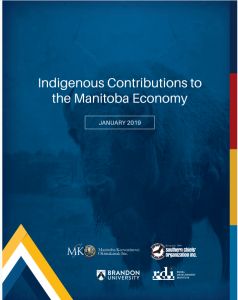By:Rural Development Institute (RPLC Partner Organisation)
Date: Thursday, January 10,2019.
Abstract
$9.3 billion. That’s the amount that Indigenous people in Manitoba spend each year—through Indigenous businesses, governments, household spending, and spending on infrastructure. The bulk of that spending is by over 700 Indigenous businesses in the province. How does all this spending impact the economy? The economic impact of Indigenous people in Manitoba can be measured in four ways: they create and maintain over 35,700 jobs, contribute $2.3 billion to Manitoba’s GDP, provide $1.1 billion in wages and salaries to workers, and contribute $231 million in taxes to the federal and provincial governments. The Indigenous contribution to Manitoba’s GDP is more than either manufacturing, accommodations and food services, or mining and oil and gas extraction.
Although the impact of Indigenous people is large, First Nations, Metis, and Inuit people could be making an even greater impact. Indigenous people make up 18% of the population of Manitoba and that’s growing. On average, Indigenous people are younger. They represent the future of Manitoba. Economic development of Indigenous communities is key to maximizing this potential. Increasingly, urban reserves are proving to be an important strategy for community economic development.
Indigenous Contributions to the Manitoba Economy has four major parts: an economic impact analysis of Indigenous spending in Manitoba, with results provided for Manitoba’s North and South; an economic impact analysis looking at First Nations spending specifically; a study of seven of Manitoba’s eight urban reserves with profiles of the reserves; and lastly, population and labour force projections of Indigenous people, and First Nations people in particular, to 2026.
The Indigenous Contributions to the Manitoba Economy research project was conducted in partnership by the Southern Chiefs’ Organization, Manitoba Keewatinowi Okimakanak Inc., and the Rural Development Institute at Brandon University.
Click Here for the Material.
